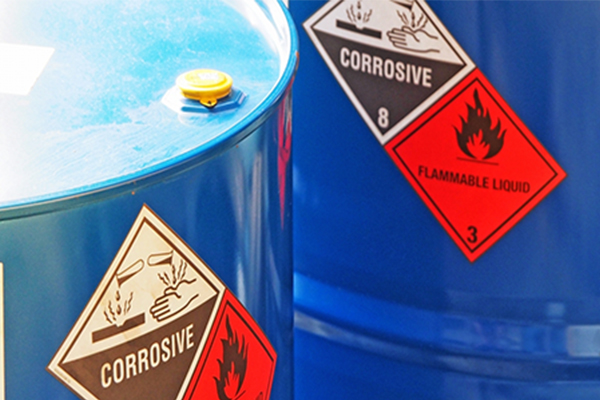In global trade, dangersChemicalsThe import and export of hazardous chemicals and dangerous goods is a highly regulated and strictly managed field, aimed at ensuring the safety of personnel, property and the environment. This article will explain in detail the relevant regulations, common problems, typical cases and warm reminders on hazardous chemicals, dangerous goods and their packaging, to help companies better manage risks and comply with regulations.

1. Definition of dangerous chemicals, dangerous goods and dangerous goods packaging
1. Definition of Dangerous Goods
According to the "Classification and Name Numbering of Dangerous Goods" (GB 6944-2012), dangerous goods refer to substances and articles with dangerous characteristics such as explosion, flammability, poison, infection, corrosion, radioactivity, etc., which are easy to cause personal injury, property damage or environmental pollution during transportation, storage, production, operation, use and disposal, and require special protection. The "List of Dangerous Goods" (GB 12268-2012) lists a total of 3,523 types of dangerous goods.
2. Definition of Hazardous Chemicals
According to Article 3 of the Regulations on the Safety Management of Hazardous Chemicals (State Council Decree No. 591), hazardous chemicals refer to highly toxic chemicals and other chemicals that are harmful to human body, facilities and environment, such as poison, corrosion, explosion, combustion and combustion-supporting properties. However, it does not include civilian explosive materials, fireworks, radioactive materials, nuclear energy materials and hazardous chemicals used in national defense scientific research and production. 2,828 chemicals listed in the Catalogue of Hazardous Chemicals (2015 Edition) are identified as hazardous chemicals.
3. Definition of dangerous goods packaging
Dangerous goods packaging refers to packaging containers for dangerous goods, including packaging containers with a capacity not exceeding 450 liters and a net weight not exceeding 400 kilograms, medium bulk containers, large containers (large packaging), etc. It also includes pressure vessels, spray cans and small gas containers, portable tanks and multi-element gas containers, etc.
It should be noted that the concept of dangerous goods is broader than that of hazardous chemicals. Some dangerous goods do not belong to hazardous chemicals, such as automobile airbags, lithium batteries, etc.
II. Common Questions about Customs Supervision
(1) The name of the product is declared as a hazardous chemical, but "package hazardous chemicals" or "bulk hazardous chemicals" is not checked; or the name of the product is declared as a non-hazardous chemical, but "package hazardous chemicals" or "bulk hazardous chemicals" is checked.
If the inspection and quarantine name is declared as hazardous chemicals, you should check "hazardous chemicals in packaged goods" or "hazardous chemicals in bulk"; if it is declared as "hazardous chemicals in packaged goods" or "hazardous chemicals in bulk", you should not select the inspection and quarantine name of non-hazardous chemicals.
(2) The "UN mark" for the declared packaging is not filled in.
When "No" is selected for "Non-dangerous goods", the information such as "UN number", "Hazard class", "Packing category" (except bulk or special provisions) and "Packaging UN mark" (except bulk or special provisions) must be filled in; when "Yes" is selected for "Non-dangerous goods", other information can be left blank.
(3) The "hazard category" is inconsistent with the category corresponding to the "inspection and quarantine name".
The hazard category shown in the "Inspection and Quarantine Name" should be consistent with the "Hazard Category" in the "Dangerous Goods Information" column.
(4) The "Packaging UN Mark" reflects a packing group lower than the "Packing Group".
The packing group reflected by the "Packaging UN Mark" should be higher than or equal to the "Packing Group".
(5) The hazard category on the Safety Data Sheet of exported hazardous chemicals is inconsistent with the actual GHS classification of the goods.
The Safety Data Sheet should fully reflect the actual GHS hazard category of the declared goods and be consistent with the classification and identification report of the hazardous characteristics of the goods.
Enterprises that import and export hazardous chemicals and export dangerous goods must declare truthfully in accordance with relevant laws and regulations, conduct self-inspections against standards, and promptly rectify any problems found to ensure customs clearance of goods. Correct declaration, compliant packaging, and accurate safety data sheets are key factors in ensuring smooth import and export of hazardous chemicals and dangerous goods.


 Follow customer service WeChat
Follow customer service WeChat